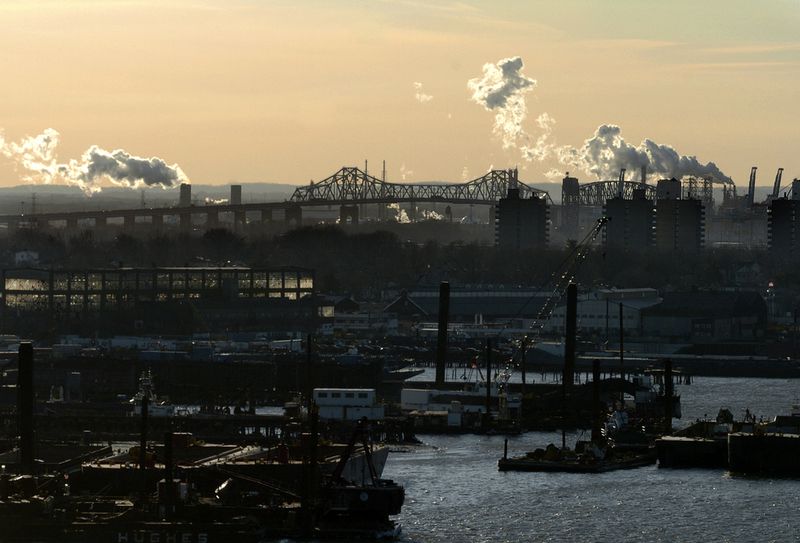STATEN ISLAND, N.Y. — The United States Environmental Protection Agency (EPA) on Friday proposed a plan to tighten air pollution standards for the first time in a decade.
The shift would aim to cut down on deadly particle pollution, otherwise known as soot, which is responsible for killing thousands yearly and disproportionately causing negative health outcomes to underserved communities.
Particle matter above 2.5 microns, known as PM2.5 and emitted from sources like power plants and vehicles, was previously allowed to linger at a level of 12 micrograms per cubic meter. The new EPA plan would lower that grade to between nine and 10 micrograms, marking the first change since 2012.
“Our work to deliver clean, breathable air for everyone is a top priority at EPA, and this proposal will help ensure that all communities, especially the most vulnerable among us, are protected from exposure to harmful pollution,” EPA Administrator Michael Regan said in a release.
A growing body of research has found PM2.5 disproportionately affects minority and low-income populations in the U.S., despite overall levels of the pollutant falling in recent years.
Both particle pollution and high ozone levels are associated with serious health impacts, including premature death, asthma attacks and cardiovascular harm. The Advance/SILive.com previously reported how the borough’s poor air quality, related to its high levels of ozone pollution, served as a pivotal antecedent to the COVID-19 pandemic that exacerbated respiratory issues.
The EPA estimated finalizing a rule shift to a standard of nine micrograms per cubic meter would prevent up to 4,200 premature deaths and result in $43 billion in net health benefits in 2032.
The agency is accepting public comments on establishing the acceptable PM2.5 range at levels between eight and 11 micrograms per cubic meter.
“This proposal to deliver stronger health protections against particulate matter is grounded in the best available science, advancing the Biden-Harris Administration’s commitment to scientific integrity and a rigorous scientific process,” said Regan.
The EPA in 2021 set ambitious rules to slash pollution from vehicles, and the agency recently proposed stricter emission standards on heavy trucks that contribute to negative health outcomes.
The Clean Air Act requires the federal government to review and appropriately revise air quality standards every five years. However, despite research indicating previously-held pollution levels were adversely affecting Americans, former President Donald Trump’s administration declined to adjust the country’s benchmark — a decision that drew the ire of advocates.
Dr. Doris Browne, former president of the National Medical Association, praised President Joe Biden Administration’s renewed efforts to improve air standards.
“No one should be sickened by the environment they live in, and EPA’s proposal marks the start of changes that will have lasting impacts in communities all over, especially Black and brown communities that often experience increased PM pollution,” said Browne.
The American Lung Association, a public health advocacy group, said the EPA’s proposal fell short of establishing meaningful changes that protect communities from harmful pollutants.
“Today’s proposal from EPA to update the national annual limits on particulate matter pollution misses the mark and is inadequate to protect public health from this deadly pollutant,” said Harold Wimmer, president and CEO of the American Lung Association, in a statement.
Article Credits: Silive

Pingback: Karnataka’s tier-2 cities staring at 40% jump in pollution - SLSV - A global media & CSR consultancy network
Pingback: A New Study Shows How Seriously Air Pollution Can Affect Your Heartbeat - SLSV - A global media & CSR consultancy network